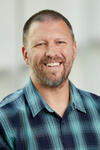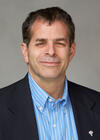In The News: College of Sciences
Conservation groups hoped a new national monument would halt mining, but President Obama passed on the proposal.

In dry, disturbed soil throughout the West, a weedy invader from Eurasia has gained a tenacious foothold. Kochia scoparia, also called poor man’s alfalfa, has slender, gray-green leaves that turn an ornamental orange in autumn. Despite control efforts, this weed springs back relentlessly thanks to its bountiful seed bank.

Armed with shovels, the group turned enough dirt to plant 630 trees and grasses along the Las Vegas Wash, an area that was once submerged and served as a docking area for boats. “This area was 50 feet below Lake Mead,” said Dr. Scott Abella, assistant professor in the School of Life Sciences at UNLV.
UNLV professor Michael Pravica explains how physics relate to modern day driving, seat belts, teen car stunts, traffic crashes, and more.
Business as usual on the Colorado River may be about to come to a screeching halt.
One of the worst recorded droughts in human history has stretched water supplies thin across the far-reaching river basin, which serves 40 million people.

It’s been 30 years since Marc Reisner’s landmark history of Western water, Cadillac Desert, was first published. The book’s dire tone set the pattern for much subsequent water writing. Longtime Albuquerque Journal reporter John Fleck calls it the “narrative of crisis” — an apocalyptic storyline about the West perpetually teetering on the brink of running dry.
Conservationists and other campaigners are urging President Obama to designate 1.7 million acres of the Canyon watershed a national monument before he leaves office

During the summer months, everyone can hear the buzz. The sound seems to fill the air from June through August. It's the sound of cicadas.

A revolution is taking place in medication and the Nevada Institute of Personalized Medicine at UNLV is at the forefront.

Frank Van Breukelen is a UNLV researcher who studies Pupfish. He said the fish help scientists understand humans and evolution.
From injectable HIV meds via CytoDyn's PRO 140 to HIV prevention via PrEP, from subdermal implants and cellular scissors to x-ray crystallography, this has been an amazing year for medical breakthroughs in HIV. Here's a roundup of some of the hottest new advances and studies in the field.

It was 34 years ago, in 1981, that the first patients of the HIV virus were identified. Today, there remain 36.9 million people worldwide living with HIV.




